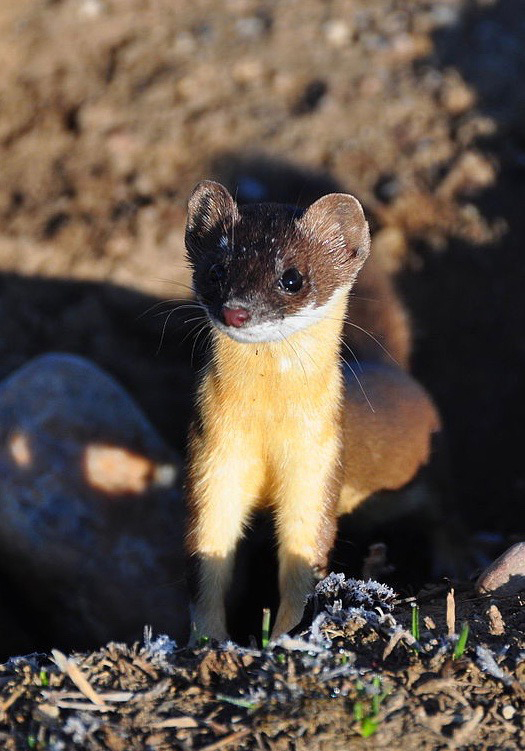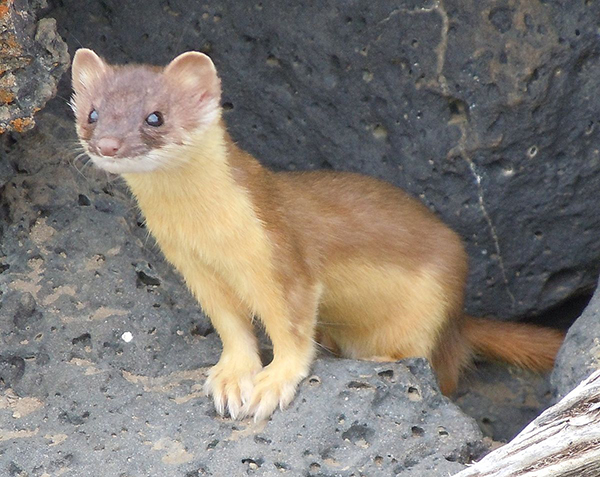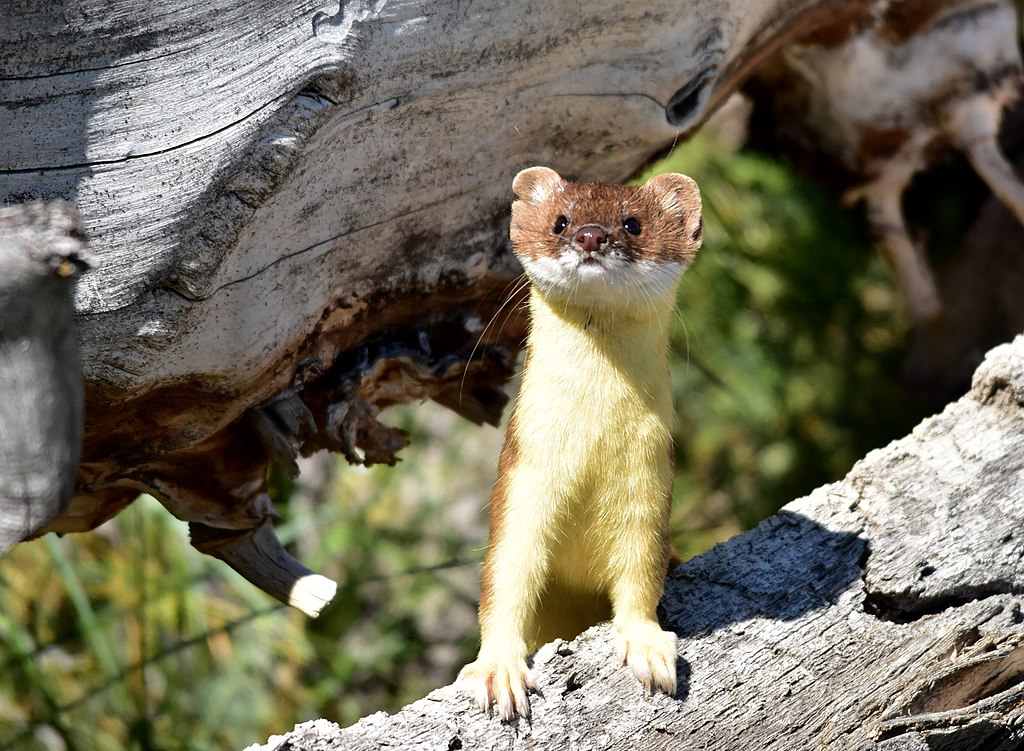[Reprinted from original]
Original Title: Art Lander’s Outdoors: The long-tailed weasel, a fearless little carnivore prevalent in Central Kentucky
This is the third article in an occasional series about furbearers in Kentucky.
The word weasel is something of a dichotomy.
By definition, a weasel is a deceitful or treacherous person. For some pet owners, weasel is a term of endearment. They call their small feisty dog, or mischievous cat, “you little weasel.”
In nature, a weasel is a small mammal that looks cute and furry like a kid’s plush toy but don’t be fooled.
The weasel is a fearless little carnivore.

The long-tailed weasel (Photo courtesy of Missouri Department of Conservation)
Geographic Range and Distribution in Kentucky
The long-tailed Weasel (Mustela frenata), one 17 species worldwide, is found throughout southwest Canada, most of the Lower 48 States, Mexico, and into parts of Central and South America.
Identified in the scientific literature in 1831, this species of weasel is most abundant in the central third of Kentucky, less numerous east of I-75 and in western Kentucky’s Jackson Purchase.
Size and Coloration
The Long-Tailed Weasel is a slender mammal, 13 to 17 inches in total length, with short legs and a well-furred tail that’s about half its body length. Its head is small, with ears that are short and rounded. The eyes are small and beady.
Coloration varies seasonally, but is generally tan to brown, with a yellowish/white chin, neck, belly and feet. Its tail has a distinct black tip.
Females are smaller than males.

(Photo Courtesy USFWS, Melanie Olds)
Habitat
Its preferred habitat is woodlands, thickets, and brushy fencerows. They are often found around old homesites, living around rock foundations of farmhouses, sheds or root cellars.
They have well-developed anal scent glands, which are used to mark their territory and discourage predators.
The weasel does not dig its own burrow. They just find a chipmunk or rodent hole, and get a free meal and living quarters. The burrow chamber is about 24 inches from the burrow’s entrance, which is usually hidden under a rock or stump. The chamber is lined with grass and the fur of its prey.
Weasels hunt day and night, but are more active in low light, or at night. They are preyed upon by larger mammals, owls, and snakes.
Food Preferences
The long-tailed weasel is a fearless and aggressive hunter that often preys on animals larger than itself.
They depend on the nutrients found in animal flesh, and do not consume any plant material.
It prefers its prey to be alive, devouring mice, voles, squirrels, chipmunks, shrews, and rabbits, dispatched with a swift bite to the neck. Occasionally, the Long-tailed Weasel may eat small birds, bird eggs, reptiles, amphibians, fish, earthworms and some insects.
Some become a nuisance, attacking and killing hens in chicken coops.
Reproduction
The long-tailed weasel mates in July through August, but amazingly, the implantation of the fertilized egg on the uterine wall is delayed until the following March.
Thus the gestation period lasts about 10 months, with actual embryonic development taking place only during the last four weeks. Delayed implantation ensures that the timing of the births will be during a period when small mammals are abundant.
Litter size generally is five to eight kits, born partially naked, blind and weighing less than an ounce. The growth rate of the young is rapid. In just three weeks, the kits are well furred, can crawl outside the nest and eat meat.
At five weeks of age, the kit’s eyes open, and they become physically active and vocal. Soon they emerge from their nest and accompany their mother on hunting trips.
Weasel kits are fully grown by autumn, when the family disbands. Females are able to breed at three to four months of age, while males become sexually mature at 15 to 18 months.
The Long-tailed Weasel is a seldom seen furbearer found throughout Kentucky. They are fearless little hunters that help control rodent populations.

(Photo from Wikipedia Commons)

(Photo courtesy USFWS, Tom Koerner)